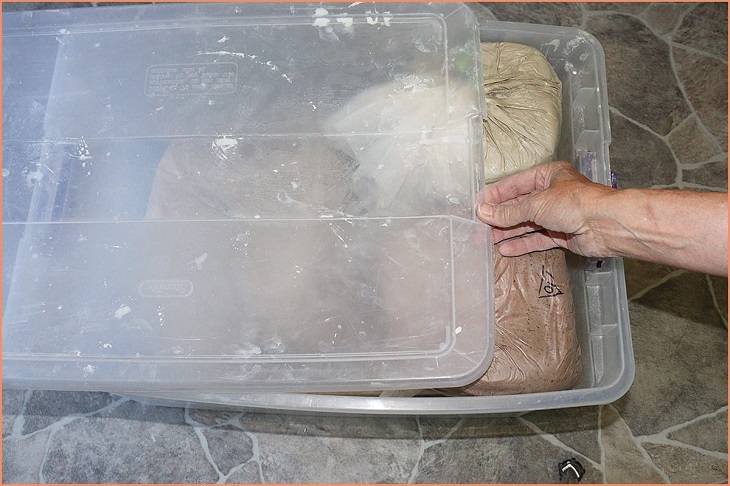05
Apr
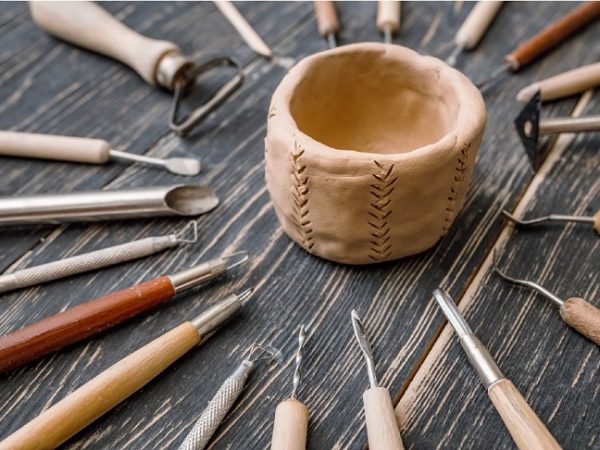
There are two main ways to work with clay: building things by hand or throwing things on a potter’s wheel. Both types of pottery use many of the same basic tools.
Even though not every tool is required, these will make working with clay much easier and improve the end result. So, here are the essential elements of clay equipment that every new potter should get for a basic toolkit when they first start working with sculpting pottery.
Working with clay pottery can get messy, so it’s a good idea to have a cotton towel that can soak up water. When working with clay, a towel is a great addition to your workspace to things clean. You might also want to wear a simple bib apron to protect your clothing from splashes and take care of organisation considering most designs come with pockets fit for storing some tools.
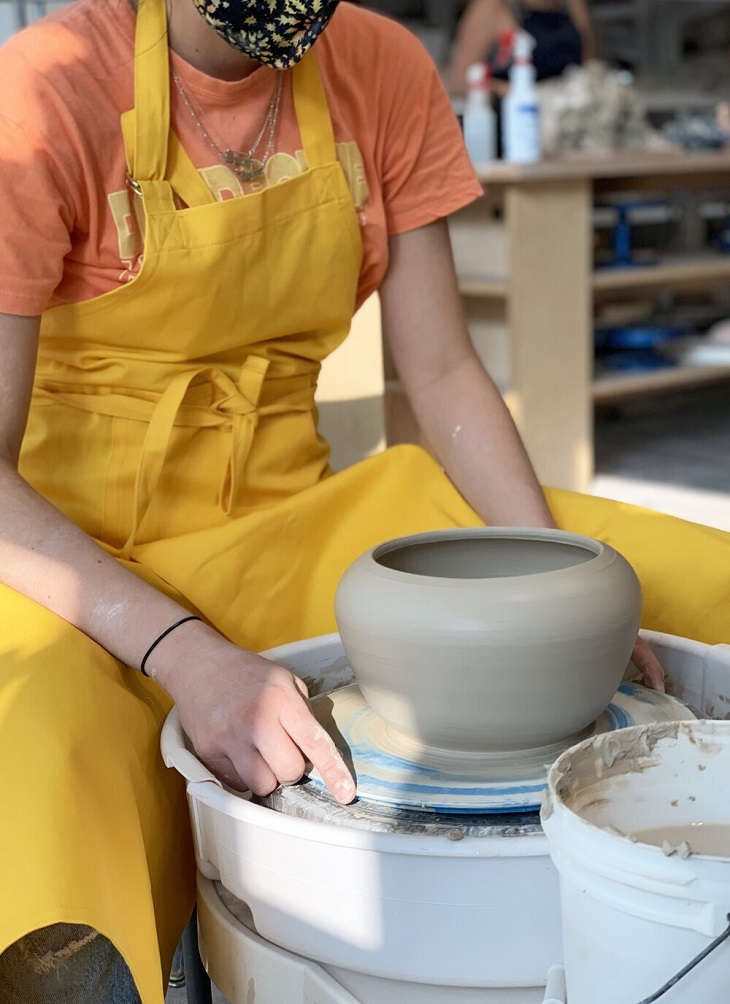
Pieces of chamois or leather work well to smooth and flatten the top edges of thrown pottery. You can also use a chamois to smooth out pieces of hard leather. Before you use the chamois, give it a little bit of water, and make sure to wash it well after every use so that the clay doesn’t harden on it.
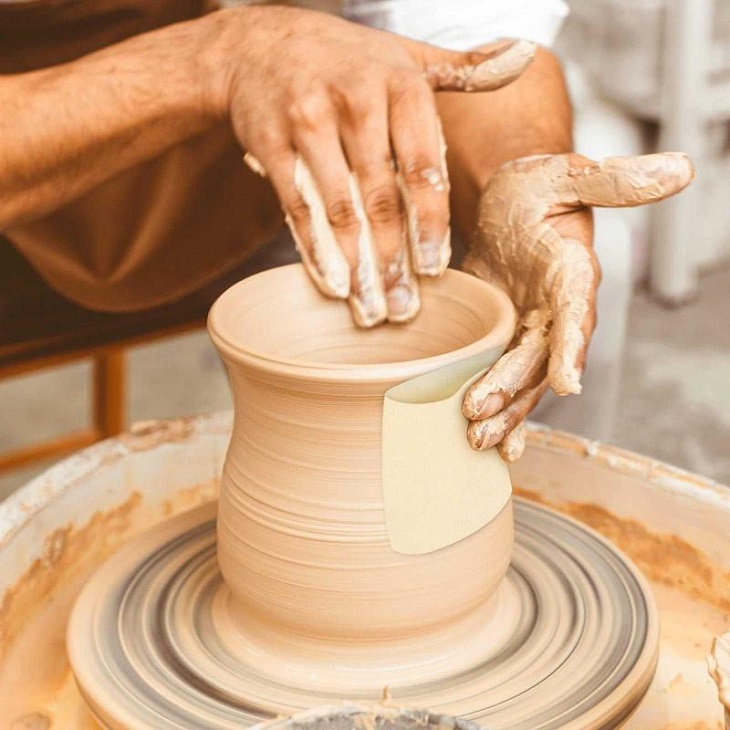
One of the most useful tools in pottery is a long, heavy needle with a handle made of wood, metal, or plastic. Use them to trim the top edges of fragments while they’re on the wheel and to score slabs and coils when you’re hand-building components.
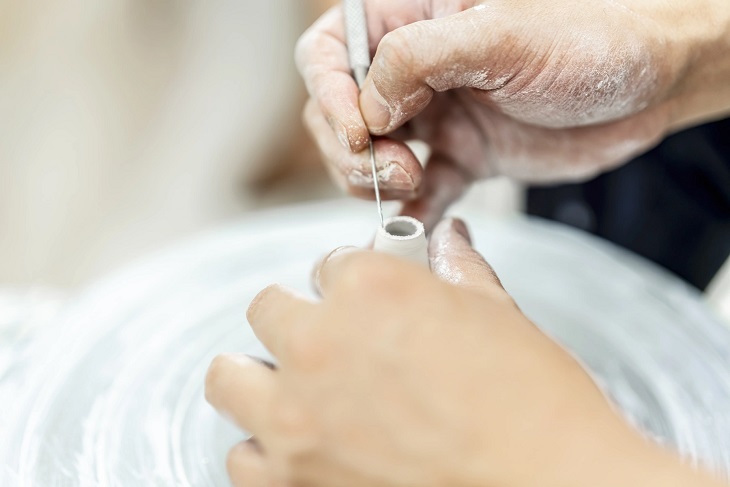
Most of them have two handles made of wood, one on each end. Cut-off wires can also be made out of fishing line and springs that are not wound up. These resemble a wire cheese cutter in appearance. A potter can use these pottery equipment tools to remove their creations from the wheel and to chop huge clumps of clay. Off the mound, you should use fishing line or another cut-resistant line.
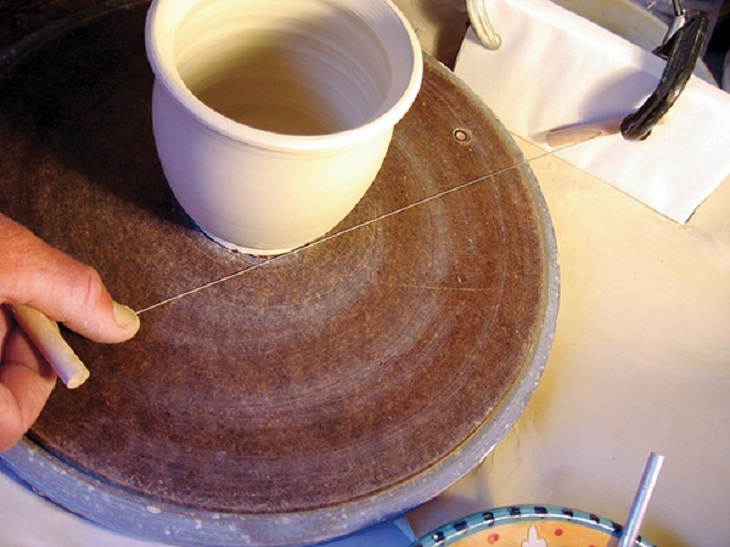
These razor sharp knives have either a firm or a soft edge. Soft fettling knives can be shaped to any angle or curve, while their rigid counterparts can’t be bent. The original purpose of these devices was to disentangle (the ridge left where pieces of the mould are joined). They are also great for slicing through sections of hand-built pots, trimming slabs, and throwing pots.
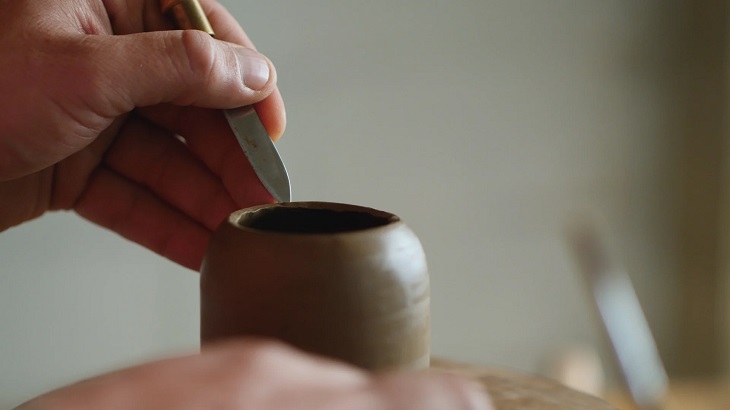
These clay equipment tools are used in the art of pottery throwing to support with shaping and smoothing of pots as they are created on the wheel. The “rib and hand” technique for handling coiled pots also makes use of these tools. It’s common to find hardwood or rubber used for ribs, and there are many distinct designs to choose from.
Scrapers resemble ribs but are lighter and are used to smooth damp or soft leather-hard greenware. They can be found in a wide variety of forms and materials, including as steel, rubber, and wood. Some potters will utilise ribs in place of scrapers for certain jobs. Typically, rubber ribs and scrapers produce the finest finish.
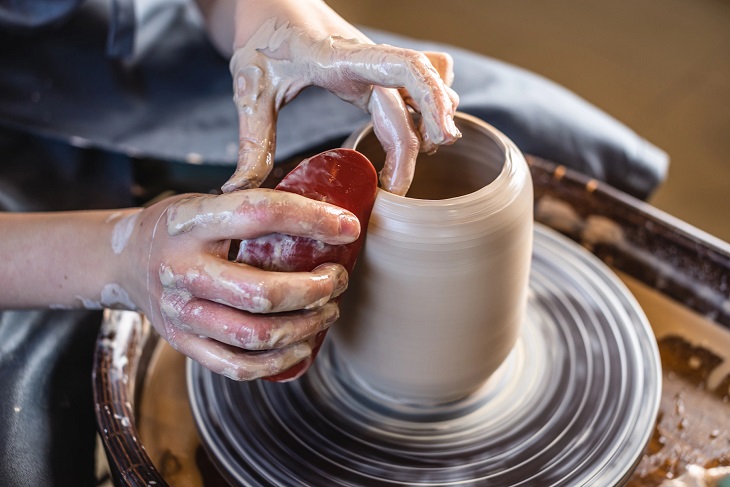
Greenware trimming and hand-building are two specific applications where these instruments really shine. There are several types of ribbons and wire that are not suitable for use in throwing because they are too delicate. On the other hand, they can be put to good use when delicately hollowing down handmade objects. In fact, you could probably even construct your own wire for use in pottery.
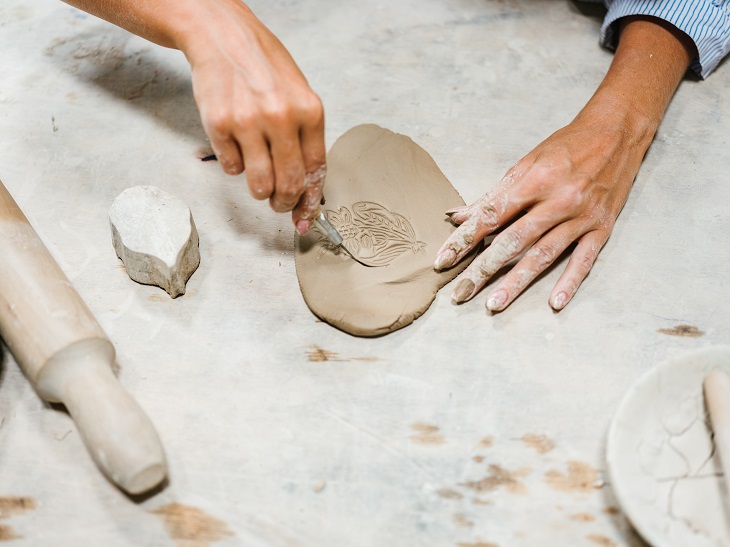
Wooden modelling tools are available in an incredible range of shapes and are adaptable to a wide range of hand-building techniques. Although they are typically used for modelling, the triangular-headed versions are also great for cutting when you’re throwing on the wheel.
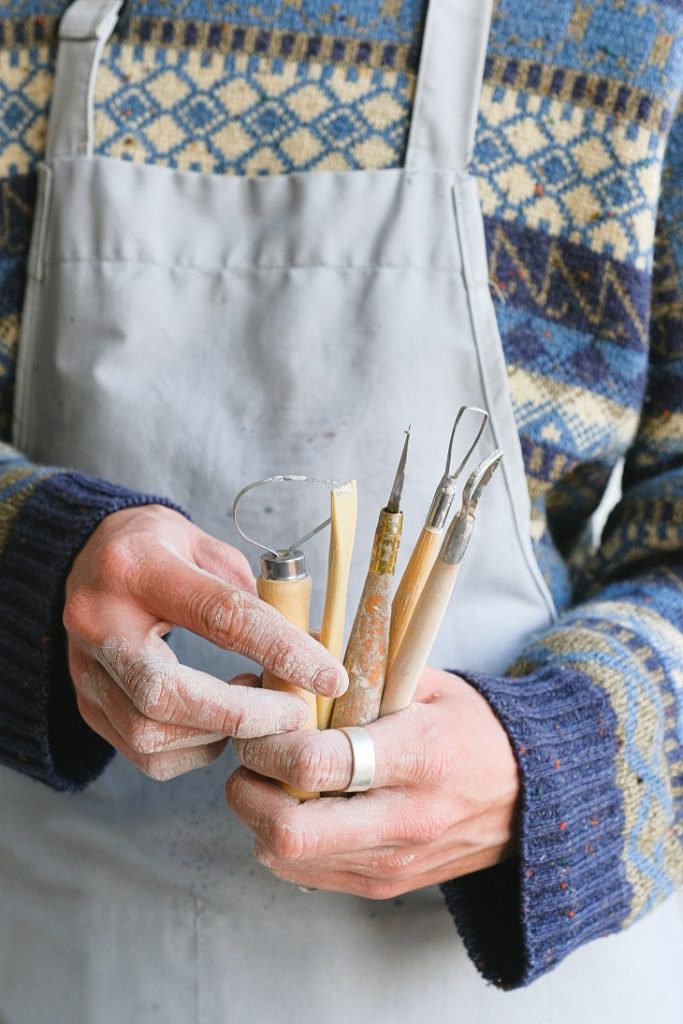
If you’re into pottery, sponges are an absolute must-have for your toolbox. Natural or specialised synthetic sponges of medium to large size aid potters in absorbing or distributing water as needed for throwing. When they’re ready to throw, many potters utilise elephant ear sponges, a special kind of natural sponge. Learn more about the different kinds of ceramic sponges if you’re interested in getting into the hobby more seriously.
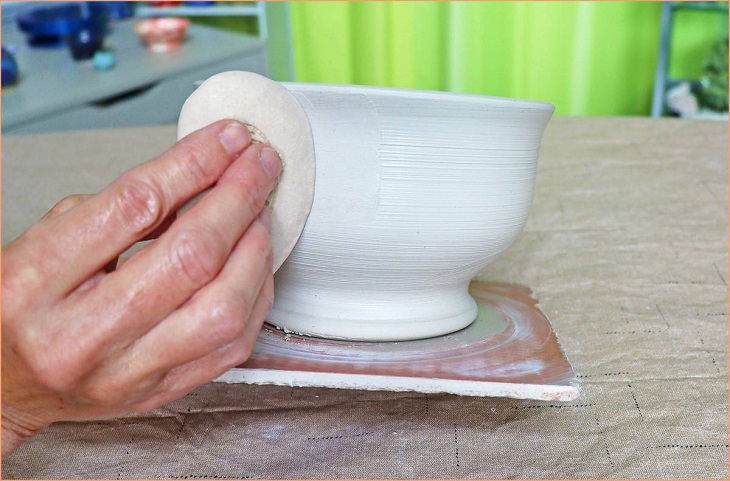
When working with clay, brushes are used to apply water and slip to specified regions, as well as for painting and decorating with slips, underglazes, and overglazes. Sumi or bamboo brushes are ideal for ceramics and pottery. They can carry a lot of liquid without losing their pointy shape.
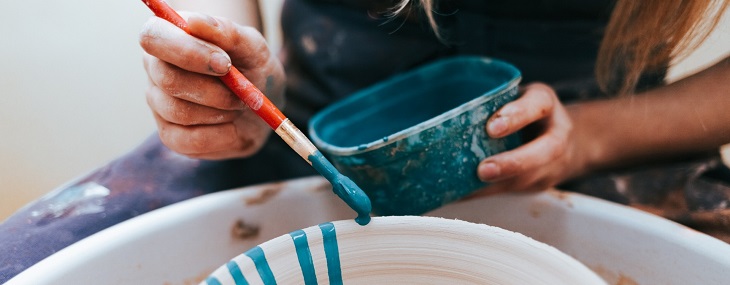
In order to ensure that the various pieces of a set fit together perfectly, potters use this type of caliper to measure the inside and outside dimensions of the pots. Useful instances include determining the size of a jar’s lid, ensuring that a pitcher’s base is the same height as the bottom of a basin, and ensuring that a cup’s base is the same depth as the hollow in the centre of a saucer.
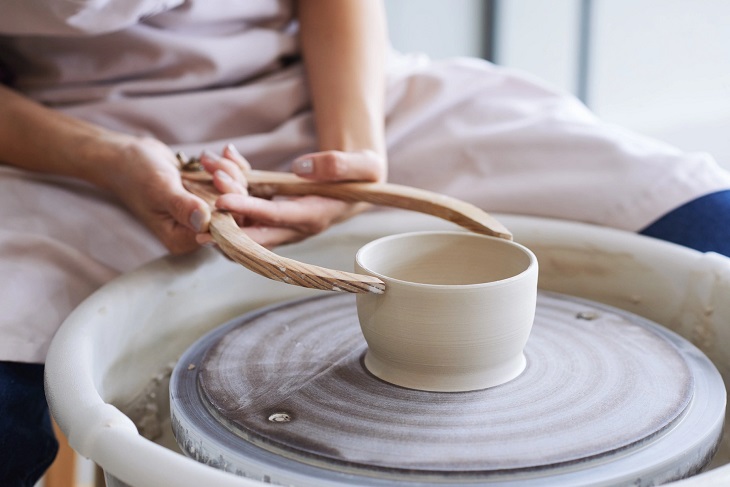
Many of the tools a potter needs are small and easily lost. For the purpose of convenience and order, most potters keep their equipment in a box. To be able to easily carry your tools about with you, a sturdy plastic box, such as an artist’s case or a fishing tackle box, is ideal. An alternative to a utensil tray is any watertight container.
It’s never a good idea to use cardboard containers, as the moist clay and water quickly dissolve the cardboard. Naturally, you’re not limited to just one container; a cloth-covered plastic box with handles and a utensil tray are both viable options for storing and transporting your hand-building materials.
